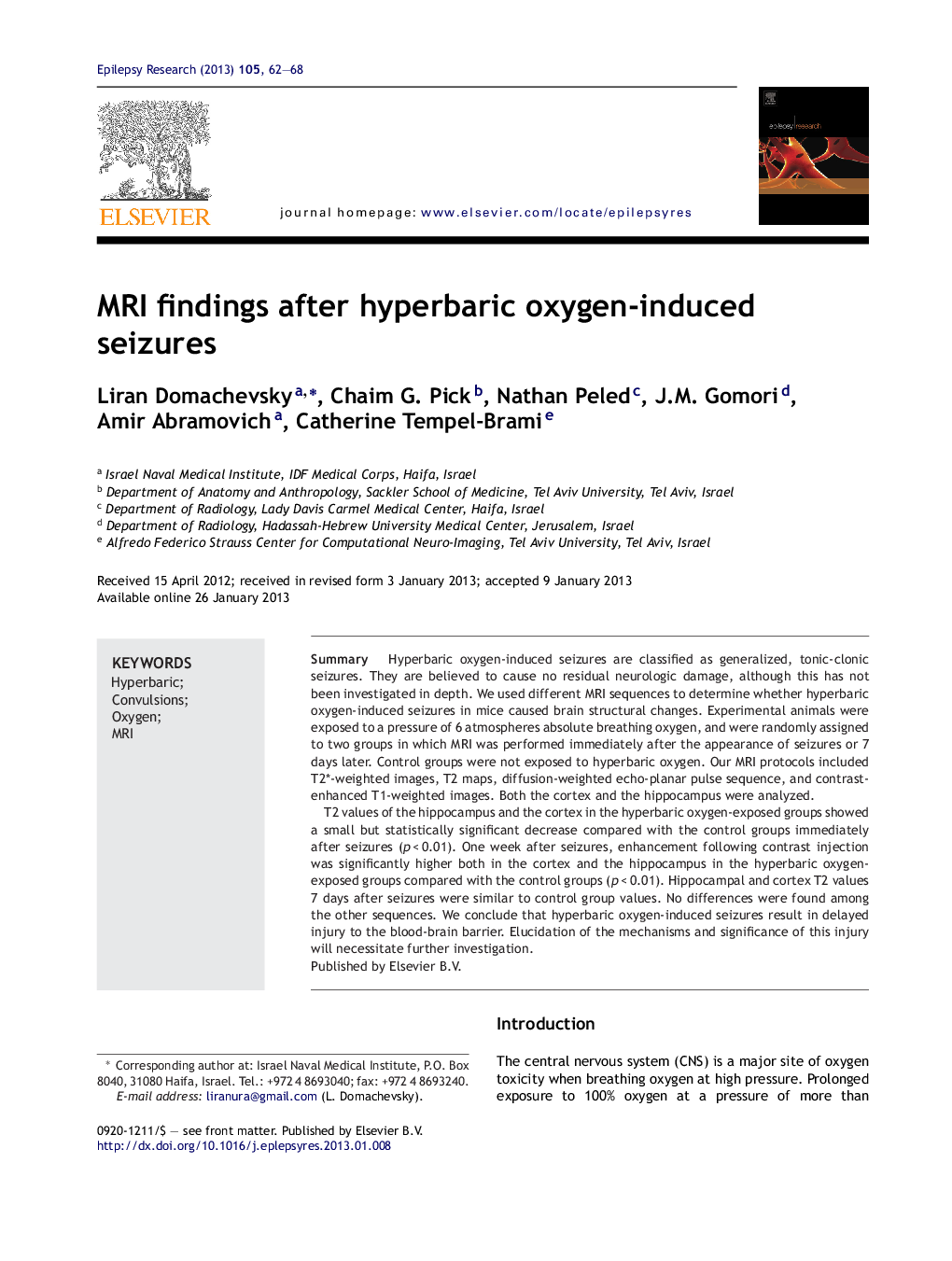| Article ID | Journal | Published Year | Pages | File Type |
|---|---|---|---|---|
| 6015958 | Epilepsy Research | 2013 | 7 Pages |
SummaryHyperbaric oxygen-induced seizures are classified as generalized, tonic-clonic seizures. They are believed to cause no residual neurologic damage, although this has not been investigated in depth. We used different MRI sequences to determine whether hyperbaric oxygen-induced seizures in mice caused brain structural changes. Experimental animals were exposed to a pressure of 6 atmospheres absolute breathing oxygen, and were randomly assigned to two groups in which MRI was performed immediately after the appearance of seizures or 7 days later. Control groups were not exposed to hyperbaric oxygen. Our MRI protocols included T2*-weighted images, T2 maps, diffusion-weighted echo-planar pulse sequence, and contrast-enhanced T1-weighted images. Both the cortex and the hippocampus were analyzed.T2 values of the hippocampus and the cortex in the hyperbaric oxygen-exposed groups showed a small but statistically significant decrease compared with the control groups immediately after seizures (p < 0.01). One week after seizures, enhancement following contrast injection was significantly higher both in the cortex and the hippocampus in the hyperbaric oxygen-exposed groups compared with the control groups (p < 0.01). Hippocampal and cortex T2 values 7 days after seizures were similar to control group values. No differences were found among the other sequences. We conclude that hyperbaric oxygen-induced seizures result in delayed injury to the blood-brain barrier. Elucidation of the mechanisms and significance of this injury will necessitate further investigation.
